Growing Evergreen Herbs: Information On Evergreen Herbs To Plant In Gardens
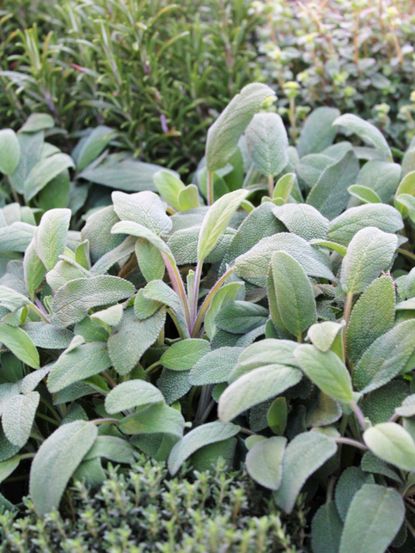
When you think of an herb garden you may picture a summertime patch of colorful plants, but not all herbs exist just for summer harvest. Some of the most common herbs grown in the United States are evergreen. What are evergreen herbs? They hold their leaves through the winter, giving you a ready source of fresh flavorings and medicinal tea all year around. An evergreen herb garden may slow down production through the coldest of the winter months, but there will always be a good supply of herbs until the spring buds burst open.
Types of Evergreen Herb Plants for the Garden
The types of evergreen herb plants vary from area to area, but most of them are viable in most climates with some care during extreme weather. Some of the popular varieties of evergreen herbs to plant are: Sage - Sage is known as a healing plant and experiments are being done with it being used for Alzheimer's patients. For the rest of us, sage is a tasty addition to holiday meals or any dish with a meat base. Rosemary - This fragrant herb keeps its tiny needles on its branches all year long. There is no need to dry rosemary sprigs when you can simply clip off a fresh stem whenever you want to use it in a dish. Lavender - Long known for its soothing, relaxing fragrance, lavender flowers are popular edible items for gourmet salads and other dishes. Juniper - Although most people may view juniper as simply a landscaping plant, its pungent needles are used in culinary dishes as well as medicinal applications.
Caring for Evergreen Herbs
Growing evergreen herbs requires a little more care than raising annual varieties, but the rewards are worth the effort. Watch the weather and give these plants some protection during the worst of winter weather by piling leaf mold around the base and covering the plants with fleece or other warm fabrics. Provide shade and extra water during the worst of the summer heat, especially if you live in a southern state. Prune the herbs in the spring before the buds swell. You'll have a healthier plant plus clippings to sprout for a new collection of herb plants.
Gardening tips, videos, info and more delivered right to your inbox!
Sign up for the Gardening Know How newsletter today and receive a free download of our most popular eBook "How to Grow Delicious Tomatoes."
-
 Clever Vertical Vegetable Garden Ideas For Small Spaces – 7 Ways To Save Space
Clever Vertical Vegetable Garden Ideas For Small Spaces – 7 Ways To Save SpaceShort on garden space? Learn some vegetable garden ideas for small spaces that are fun and easy.
By Mary Ellen Ellis
-
 26 Different Types Of Orchids – With Pictures & Information
26 Different Types Of Orchids – With Pictures & InformationDiscover stunning orchid types to grow in your home and garden – from easy beginner varieties to rare and exotic species that are the preserve of experts.
By Melanie Griffiths
-
 Grow Tasty Herbs For Roast Turkey In Your Garden
Grow Tasty Herbs For Roast Turkey In Your GardenCan you season your turkey with herbs you grow in your own garden? Yes! Click to learn more.
By Amy Grant
-
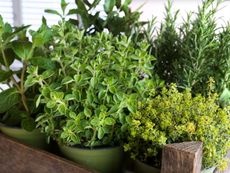 10 Easy Herbs For Beginners
10 Easy Herbs For BeginnersIf you’re new to herb growing, there are some perfect beginner herbs that are low maintenance and easy. Here are our top ten.
By Mary Ellen Ellis
-
 How To Make A Rain Gutter Herb Garden
How To Make A Rain Gutter Herb GardenOne really fun look outside the box is a hanging rain gutter herb garden. A gutter planter is a unique way to house and showcase plants.
By Bonnie L. Grant
-
 Grow A Beautiful, Edible Herb Window Box
Grow A Beautiful, Edible Herb Window BoxGrowing herbs in window boxes is a space-saving method for producing culinary ingredients for kitchen use. Click for more.
By Laura Miller
-
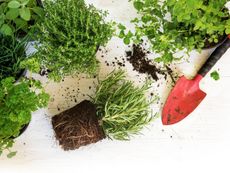 Best Herbs To Direct Sow Vs. Start Indoors
Best Herbs To Direct Sow Vs. Start IndoorsKnowing when to buy herb plants or start them from seeds or cuttings is essential to your success. Read on to learn more.
By Laura Miller
-
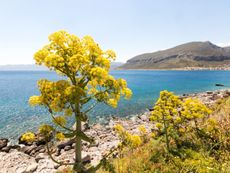 Learn About The Highly Prized Silphium Herb
Learn About The Highly Prized Silphium HerbWhat if there was a perfect plant? In ancient times such a treasure existed. It was the silphium plant.
By Laura Miller
-
 Grow Healing Herbs Indoors: Combat Winter Illness With A Medicinal Garden
Grow Healing Herbs Indoors: Combat Winter Illness With A Medicinal GardenIf you are growing medicinal plants at home, did you know you also can grow an indoor medicinal herb garden? Read on for more.
By Susan Albert
-
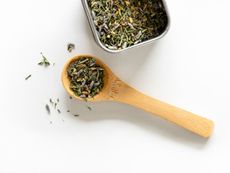 Grow Your Own Herbes De Provence - How To Grow, Dry, And Store Herbs
Grow Your Own Herbes De Provence - How To Grow, Dry, And Store HerbsHomemade gifts can add that special touch to any occasion, such as a jar of herbes de provence. Click here to learn how to grow and make your own for gifting.
By Laura Miller